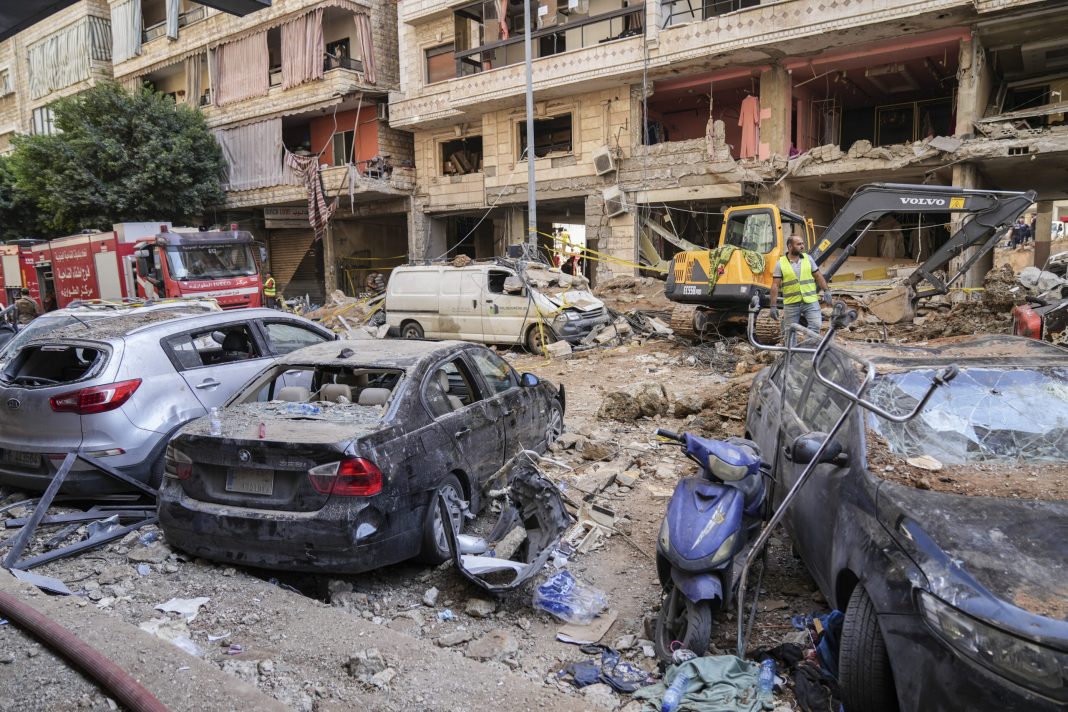In an escalating military campaign, Israel’s armed forces have intensified their operations in southern Lebanon, aiming to create a buffer zone to mitigate the perceived threats from the Iran-backed Hezbollah group. The situation has led to significant destruction across various border villages, with reports indicating that many areas have been left in ruins.
Beginning in September, Israel commenced a heavy bombardment of southern Lebanon. The military campaign has included not only aerial strikes but also the deployment of ground troops into the region. An official from southern Lebanon disclosed that more than a dozen border villages have sustained approximately two-thirds destruction, with widespread devastation evident in the frontier areas.
Peter Harling, the founder of the Beirut-based research center Synaps, remarked on Israel’s intention to create a “no man’s land” along the border, making the region largely uninhabitable. Local reports have suggested that Israeli soldiers have demolished structures in several villages, while authorities in Lebanon have accused Israel of intentionally setting fire to forests and agricultural lands.
Israel’s strategic goal appears to be to ensure that Hezbollah is distanced from the border to prevent any potential cross-border attacks. Orna Mizrahi, from the Institute for National Security Studies in Tel Aviv, highlighted that while the military action seeks to create a security perimeter, the aim isn’t to entirely displace the local population but rather to limit Hezbollah’s proximity to the border.
The backdrop to this military initiative stems from months of conflict, initially triggered by cross-border strikes from Hezbollah that were launched in support of Hamas following the militant group’s attack on Israel on October 7, 2023. Hashem Haidar, leader of Lebanon’s Southern Council, reported that 18 villages adjacent to the 120-kilometer-long Israel-Lebanon border have seen destruction levels of around 70 percent, with estimates indicating that approximately 45,000 homes have been lost.
In deeper assessments of the devastation, military expert Hassan Jouni noted that Israel’s systematic demolition of homes and burning of nearby terrains serve the dual purpose of enforcing military control and preventing Hezbollah from replicating Hamas’s tactics from the Lebanese front. As of November 7, satellite analysis revealed that more than half of the buildings in ten border villages had been significantly damaged, with places like Mais al-Jabal reporting over 1,000 buildings struck.
Local officials have expressed dismay at the extent of the destruction. Schools, mosques, and essential infrastructure have been targeted, reflecting a humanitarian crisis in the affected areas. In nearby villages such as Mhaibib, reports indicated that over 84 percent of structures were destroyed, and Yarun suffered the loss of three-quarters of its central buildings.
Analysts suggest that Israel may also be probing Hezbollah’s defensive capabilities in anticipation of larger operations. Despite the extensive military actions, however, experts have observed that Hezbollah remains resilient, continuing to launch missile strikes and drones into Israel, indicating that the current operations may not deter the group’s capabilities.
In light of historical conflicts and ongoing tensions between Israel and Hezbollah, the situation remains delicate. Israel recognizes two significant threats from Hezbollah: the potential for long-range rocket attacks and incursions from the elite Radwan unit, which has reportedly been planning incursions akin to those executed by Hamas. Following a military withdrawal in 2000 after 22 years of occupation, southern Lebanon has remained a flashpoint of conflict, with the 2006 conflict further complicating the dynamics between the two parties.
As international negotiations facilitated by the United States and France seek to address the ongoing strife, experts have expressed skepticism regarding the viability of establishing a sustainable buffer zone. Jouni encapsulated this sentiment, suggesting that past patterns indicate that once political avenues change, local populations may return to rebuild their homes, undermining the intended objectives of the military strategy.





